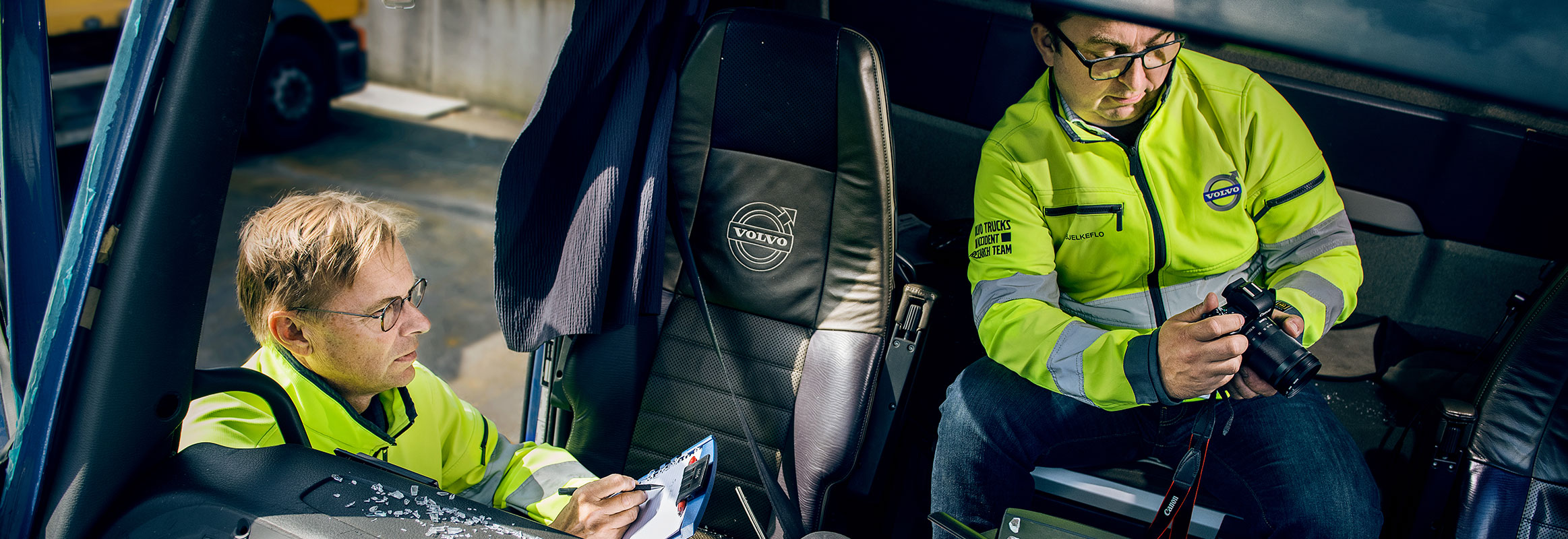
THE ART OF SAFETY
World Health Organisation statistics show that, on an annual basis, around 1.25 million people are killed in road traffic accidents worldwide. Volvo Trucks openly shares on-going research conducted by our specialist Accident Research Team (ART) with the wider transport industry in order to move towards a target of zero accidents.
Since its creation in 1969, the ART has studied and analysed more than 1,700 accidents involving trucks. The resulting information is directly used as a basis for Volvo product development, making Volvo Trucks as safe as possible.
ART data has directly influenced design of both the exterior and interior of Volvo cabs. The shape of the rear-view mirror on the Volvo FH gives the best possible view to the rear, while inside the cab, all corners are rounded to minimise injuries during a crash and the clean, simple design of the instrument display panel.
Before the existence of the ART, a crash test was the only way to test a truck’s robustness. Crash test and accident simulations build on certain standard types of traffic accidents — the trouble is that no crash is exactly like any other. In the words of Peter Wells, previous head of ART and author of the ART Volvo Trucks Safety Report (2017). “Reality is not standard.”
Technological development at Volvo is now focused on Active safety systems, designed to assist drivers and create another layer of safety on top of passive safety systems like the three-point seatbelt and airbag. Active safety systems are designed to warn drivers about an upcoming accident —and take control of the vehicle if the driver fails to act.
Learning from the ground up
The ART has investigated thousands of traffic accidents at crash sites all over Europe. By going to crash sites and carefully mapping out details, such as the position of skid marks and moment of impact, as well as interviewing police, the driver and medical staff, the team is able to create a picture of exactly what happened before the accident took place and what caused injuries when the accident occurred.
Volvo Trucks uses the comprehensive ART database of real accident types as the basis for computer simulations. But despite new possibilities to test different safety functions through computer-aided drafting (CAD) and simulation tools, fieldwork is just as relevant today as it was in 1969. It was through the knowledge gained by the ART that Volvo developed its classic Elk Test — still the toughest crash test for trucks worldwide.
The second Volvo Trucks Safety Report (published by the ART in 2017) set the benchmark for the understanding of accident-causing factors and accident types. The report also clearly maps out priority focus areas for improvements in road safety.
With 90% of incidents involving human factors, developing an in-depth understanding of human behaviour is key to accident reduction. Volvo Trucks has a dedicated department focused on Driver Environment and Human Factors that uses ART data to develop different Human-Machine Interfaces (HMIs) between the truck and driver. These interfaces are designed to reduce the most common types of accident.
Accident-causing factors
Accident scenarios are complex, and an accident rarely has a single cause. ART data allows the interacting factors that lead up to an accident to be grouped into three categories: human factors, environment and vehicle.
o Human factors are involved in approximately 90% of all cases. It’s worth noting that human factors are not necessarily the same as human errors, they include things like inattention, lack of risk awareness and misjudgement of complex traffic environments. One growing problem is the use of smartphones in traffic.
o Traffic environment contributes to 30% of all cases. This can be categorised into three areas: road design, traffic planning and weather. Some specific examples could be poor visibility at intersections or the absence of central road barriers.
o Vehicle is a contributing factor in 10% of cases, with visibility often proving an issue for drivers.
In its sixtieth year, the ART continues to work supplying data to improve Volvo Truck design through Active safety systems and beyond. Until the road transport industry reaches its goal of zero accidents, the ART’s role is as important to Volvo as our technical safety solutions. At Volvo Trucks, safety is in our DNA.
Read the full Volvo Safety report here